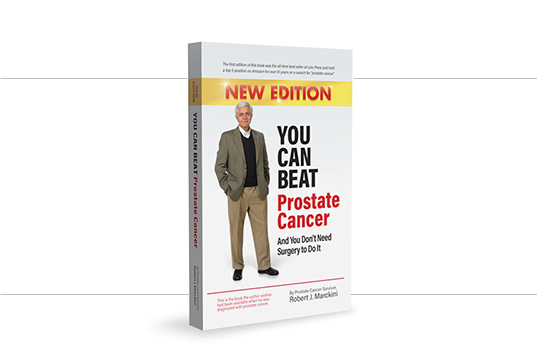
Dear Members (a note from Deb Hickey):
Sometimes I find myself preoccupied with negative issues, such as my health challenges, the well-being of my family, my daughter’s learning difficulties, my dog’s eating disorder (yes, you read that right), the current political climate and global turmoil, all while focusing on an overwhelming to-do list.
Occasionally I find myself negotiating with God, expressing my wishes out loud and hoping for a sign of acknowledgment. Recently, I decided to begin setting aside time for reflection. I offer a prayer, practice deep breathing, and contemplate my life and lifestyle. This is a challenge for me, given my workload, demands on my time, and stress levels. For those of you who can relate, I suggest dedicating just 15 minutes each day for quiet meditation or similar practice.
If you’re like me, you may realize you’re not fully embracing your optimal life. There could be a tendency to dwell on the past, fear the future, and navigate through daily tasks mechanically, only to find yourself back at the starting point the next day. This is really not living.
Consider the profound perspective shared by Steve Jobs:
“If today were the last day of my life, would I want to do what I’m about to do today? Whenever the answer has been ‘no’ for too many days in a row, I know I need to change something.”
This notion of living each day as if it were your last isn’t about recklessness; it’s about infusing purpose into every moment. Even on days when you don’t feel your best, there’s an opportunity to give your best. Expressing love to family and friends, assisting your child with homework, preparing a meal for a loved one, or even contributing to causes that matter. All these actions hold significant value.
Also, embracing daily gratitude – taking just a few minutes to reflect on what you’re thankful for – has a remarkable impact on mood and stress levels. Even seemingly small things carry profound significance, creating a heightened awareness of the blessings we often overlook. Today, I’m grateful for the nourishment I receive, the clean water I drink, the comfort of my home, and the safety of my community.
This newfound awareness helps me create a meaningful space for myself and those around me. It enables me to discern between what’s truly important and what isn’t. Each day becomes an opportunity for positive change, fostering a life rich in purpose and gratitude.

In this issue of BOB Tales, we’re excited to share the results of a new study that shows how supervised exercise can significantly help with erectile dysfunction in men who’ve undergone prostate cancer treatment. We’re also pleased to include the results of another study showing how plant-based eating is associated with a better quality of life in men with prostate cancer. We report on a new product that provides relief from hot flashes, one of the most common side effects reported by men undergoing hormonal therapy.
In our Flashback section, we present the final part in our four-part series on male osteoporosis. In our Health section, we provide tips on how to take care of yourself and others during cold and flu season, and we tell you the bacteria “hot spots” to avoid or safeguard yourself against during air travel. As always, we welcome any suggestions you have on improving the value of the BOB Tales to our members. Please send your feedback to [email protected]. Deb Hickey
As always, we welcome any suggestions you have on how to improve the value of the BOB Tales to our members. Please send your feedback to [email protected]. Bob Marckini
*To print the BOB Tales newsletter or view the newsletter with a larger font size, click here for the PDF file.

- Scientists Discover ‘Simple Way’ to Combat ED After Prostate Cancer Treatment
- Plant-based Diet Linked to Better Quality of Life in Men with Prostate Cancer
- New Product Provides Relief from Hot Flashes
- Male Osteoporosis: A Four-Part Series
- Respiratory Infection Prevention and Treatment
- Staying Healthy While Traveling

Scientists Discover 'Simple Way' to Combat ED After Prostate Cancer Treatment
A new study out of Australia suggests that supervised exercise interventions can significantly benefit prostate cancer patients dealing with sexual dysfunction.
The long-term clinical trial, presented at the American Society of Clinical Oncology Breakthrough Meeting in Japan, revealed that physical exercise not only improved sexual health outcomes, it also demonstrated positive effects on overall physical strength and well-being.
The study, led by Professor Daniel Galvao, the Director of ECU Exercise Medicine Research Institute (EMRI), highlighted the prevalence of unmet sexual health care needs in nearly half of prostate cancer patients. Sexual dysfunction can be a distressing and persistent side effect of prostate cancer treatment, affecting patients both physically and psychologically. This research indicates that supervised exercise interventions can offer immediate benefits to patients in improving their sexual health.
“The loss of erectile function is a major life stress for many thousands of men being treated for prostate cancer each year. This study proves the power of exercise in helping restore sexual function while improving overall health, building on earlier research, which found that exercise can also help reduce the risks of recurrence in men with prostate cancer,” Anne Savage, Prostate Cancer Foundation of Australia CEO, said.
Previous studies by EMRI found that exercise can stimulate the production of cancer-fighting proteins known as myokines. These myokines have been observed to suppress tumor growth, even in late-stage and terminal prostate cancer patients. Professor Galvao emphasizes that this latest evidence underscores the importance of considering exercise as an integral part of prostate cancer treatment.

Plant-based Diet Linked to Better Quality of Life in Men with Prostate Cancer

Stacy Loeb, MD, Urologic Oncologist, NYU, Langone Health, New York, recently discussed her significant research on the relationship between plant-based diets and prostate cancer risk. Building on earlier findings that link higher consumption of plant-based foods with a reduced risk of fatal prostate cancer, Dr. Loeb’s recent study delves into the potential benefits of such diets on post-diagnosis quality of life outcomes. Focusing on issues like erectile dysfunction and urinary control, Loeb’s team analyzed data from a longstanding Harvard study involving over 3,000 male health professionals diagnosed with prostate cancer.
The research indicates improvements in various functional outcomes among those who consume more plant-based foods. Dr. Loeb’s simple recommendation for patients is to “eat more plants,” highlighting potential upsides such as risk reduction, weight loss, improved cardiovascular health, and positive environmental impact. She expresses the hope that future research will explore the mitigating effects of plant-based diets in patients with a high genetic cancer risk.
“…even small changes can incrementally make a difference. And if you feel overwhelmed by this, just start with one day a week – like meatless Monday – and then you can go up from there,” Dr. Loeb said.
According to Loeb, it’s easier to start by adding food to your diet instead of taking food away. And why not try a meal with chickpeas, lentils, or tofu as the protein. There are also apps like HappyCow, which help users find plant-based food options worldwide. And websites like the Physicians Committee for Responsible Medicine offer training courses, vegetarian recipes, and much more. The wealth of resources available makes it much easier for people looking to incorporate more healthful foods into their diets.

New Product Provides Relief from Hot Flashes
Over the years, we’ve heard from members who were treated with Androgen Deprivation Therapy (also called ADT or hormonal therapy) that, while on ADT, they suffered from bothersome hot flashes. A few over the counter as well as prescription medications have helped some. But for those of you who may still be suffering, perhaps you’d be interested in some wristwear…
A recent study, published in Prostate Cancer and Prostatic Diseases, evaluated the feasibility of a novel wearable thermal device that provides cooling to the inside of the wrist for management of hot flashes due to hormonal therapy in prostate cancer patients.
Fifty-seven men, ages 61 to 73, participated in the study over a four-week period. Sixty-nine percent of those who completed the study reported that the thermal device helped manage their hot flashes, and there were no reported side effects. Future randomized control studies are planned to generate more definitive data on the management of hot flashes.

We’ve been producing BOB Tales newsletters for more than 22 years. During this time we’ve published articles that many new members haven’t seen, and some older members may have forgotten. So, we periodically re-run articles from past BOB Tales. The following important article, from July 2007, is the first in a four-part series written by a prominent and learned member of our group. It’s a topic all our members should pay close attention to. This series, published 16 years ago, is as timely today as it was then.
Male Osteoporosis: A Four-Part Series
The following was written by BOB member Herbert Klein, M.D., PhD. The more Herb researches the subject the more he learns and the more he wants to pass on to his “brothers.” All men (and women) should pay attention to bone health, especially as we get older, but prostate cancer survivors should pay even closer attention to osteoporosis and vitamin D as Herb explains. Following is part four.

Part 4
Key points:
- It’s been suggested that excessive bone breakdown occurs in prostate cancer even without androgen deprivation therapy.
- A national research study called MrOS will follow 5,700 men to reduce the deficiencies in our understanding of male osteoporosis.
- There is disagreement as to whether dual energy X-ray densitometry (DXA or DEXA) or quantitative computerized tomography bone mineral density (QCT) is the preferred diagnostic method for osteoporosis.
- Let’s take good care of our bones!
Perhaps there’s a relationship between prostate cancer and osteoporosis. According to prominent oncologist Dr. Stephen Strum, excessive bone breakdown “appears to be operative in prostate cancer even without androgen deprivation therapies.” Why might this be? One possible reason is that certain conditions – like too little vitamin D – can predispose to both prostate cancer and osteoporosis. Another is that prostate cancer cells produce substances called cytokines that increase bone breakdown. These issues are not fully settled, but I would chalk them up as factors that should make prostate cancer patients concerned about both osteoporosis and low vitamin D. Also, even with all the benefit that we received from radiation, it can’t have helped our hips that they were in the beam.”
“…certain conditions—like too little vitamin D—can predispose to both prostate cancer and osteoporosis.”
Less is known about male than female osteoporosis, but in a new National Institutes of Health research study, “MrOS,” 5,700 men will be followed for several years, to find information that will aid in its detection and treatment and also to determine the relationship between osteoporotic fracture and prostate cancer.
Turning to the tests that can tell if you have osteoporosis, you might think that plain two-dimensional x-rays of your bones would give the answer, but they are not very accurate at all. The recommendation from the reference of my first installment was for dual energy x-ray densitometry (DXA or DEXA), a two-dimensional method of evaluating bones, in which the use of x-rays of two different energies creates an advantage over ordinary x-rays. An alternative method is quantitative computerized tomography bone mineral density (QCT), which is a form of CT (or CAT) scan, and which therefore has the advantage of being truly three-dimensional.
DXA is widely available, simpler, cheaper, and entails less radiation. Through widespread use, it has become a better established methodology, with a larger data base of results to which patients can be compared. It is probably less vulnerable than QCT to technical differences among different institutions, which, when not optimal, may degrade the study.
QCT allows one to confine the region of interest in three dimensions to the bone, excluding interfering structures. As to cost and radiation, the gap between QCT and DXA may be closing.
In favor of QCT, Dr. Strum has said:
In my opinion, the use of DXA scanning in the context of men with prostate cancer who most commonly have osteoarthritis as well as vascular calcifications is a reflection of a lack of understanding of the confounding influence of these issues on the accuracy of the DXA scan. Osteoarthritis and/or vascular calcifications will increase the bone mineral density of the DXA scan and result in a false sense of bone density and a lack of need for any treatment to either correct abnormally low bone density or to prevent further bone loss due to medical treatment such as ADT. Moreover, the QCT bone mineral density test evaluates the trabecular (i.e. spongy) bone, which is five times more metabolically active than the cortical bone which is evaluated by the DXA scan.
On the other side of the fence is the following, a personal communication to me from a respected (but anonymous) national authority on osteoporosis:
DXA is still the gold standard for assessment and classification for osteoporosis in men and women. QCT gives the patient a higher dose of radiation and overestimates the prevalence of osteoporosis. For women, this overestimation is a major problem and the diagnosis of osteoporosis comes about 10 years earlier. There are fewer fracture data associated with QCT, especially with men. Furthermore, I would worry about the male database that QCT uses. Since only one or two vertebrae are used for the measurement, the precision error is higher than with standard DXA. For the present, I would still recommend using the standard DXA assessment for classification and follow up of bone density for osteoporosis.
So there’s a disagreement and everyone who wishes to heed the call to get screened can examine the arguments for one or the other method and form an opinion, just as for lots of controversial things.
In the veterans’ hospital where I work, the osteoporosis experts rejected QCT in favor of DXA for the reasons in the second quote. My wife and I have both had DXA, and it’s my personal preference, but I wouldn’t fault someone for choosing QCT.
The MrOS study will use both DXA and QCT, enabling a better comparison after its completion, including the relationship between the test results and fracture occurrence.
I have had to limit myself in this series, and, while I would love to be able to tell you, “These are the facts and here is exactly what you should do,” I can’t be that dogmatic. There are areas of disagreement, but I don’t think that the main message is controversial. It’s that older men are at risk for osteoporosis and/or vitamin D deficiency, whether they have had prostate cancer or not and even if they haven’t had androgen deprivation therapy, and that these problems need attention. The details of what is done should be worked out between you and your physician, who we hope is tuned in to this problem.
So let’s all take good care of our bones as well as the rest of our bodies!
Surgery Before Protons?
Our proton therapy patient reference lists are, by far, the most popular requests we receive from newly diagnosed men (and often, their significant other). These lists include the following:
- Name
- Profession/retired
- Email and/or phone number
- Age at time of treatment
- Year treated
- Hometown and state
- Proton treatment center
These lists are categorized by:
- Proton treatment center
- Treatment protocol (e.g. standard, hypofractionated, or SBRT)
- Pre-existing health condition (e.g. enlarged prostate, hip replacement)
- Preliminary treatment (e.g. surgery)
- Adjunct therapy (e.g. ADT)
- Some professions (e.g. pilots)
- Country of origin
- And even RV enthusiasts!
We’re also beginning to create reference lists categorized by age and state.
Members on these lists are all volunteers who are willing to share their experience of treatment and results with men who are considering proton therapy to treat their prostate cancer. Men on these lists are contacted occasionally – usually a handful of times per year – and if you’d like to have your information modified or removed, just let us know.
Last month, a gentleman requested to connect with members who had proton therapy after a recurrence following prostatecomy. We’d like to update this list with members who were more recently treated. So if you fall into this category; you were treated after 2017; and you’re willing to share your treatment experience and outcome, please send an email to Deb at [email protected].
Thank you. We think this is a great way to “pay it forward,” and we genuinely appreciate all of our volunteers!
Remembering the Pioneer

More than 40 years ago, when the late Dr. James M. Slater was a young physicist and oncologist, he was deeply troubled by the collateral damage caused by the conventional radiation he was administering to patients. Recognizing the need for a superior treatment method, he was unwavering in his determination to discover something better. Dr. Slater went on to champion and oversee creation of the world’s first hospital-based proton treatment center at Loma Linda University Health.
Although we are proud to have members representing all 44 U.S. proton centers, as well as many overseas, we began our efforts with the support of LLUH and have been closely affiliated with them for more than 20 years. They’ve not only supported our efforts by educating us about proton therapy technology and patient care, they’ve provided our organization with both financial and administrative support for which we are grateful.
We kindly urge our members to keep in mind those of us who’ve benefitted from proton therapy. And we encourage you to make a contribution to cancer research at LLUH and/or remember LLUH in your estate plan. Your generosity will contribute to LLUH’s new initiatives for cancer care, encompassing not only prostate cancer, but also major breakthroughs in theranostics (which uses molecular imaging tests to identify cancer cells and then radiopharmaceutical medications to target and destroy cancer cells while leaving normal cells alone) and CAR-T technology (which uses the patient’s own immune cells to kill cancer cells).

Giving Options

-
Online: Donate here. From the pull-down menu, choose where you’d like to direct your gift — 1) Proton Research through the James M. Slater Chair, 2) Proton Research through the Robert J. Marckini Chair, or 3) choose “Other” and specify “Cancer Center Vision” or another area where you’d like your gift directed in the space provided.
-
By Check: Make your check out to “LLUCC.” Specify where you’d like to direct your gift in the memo line — 1) Slater Chair, 2) Marckini Chair, 3) Cancer Center Vision or 4) write “unrestricted” so LLUH can use it where it’s needed most. Mail your check to: LLUH, Office of Philanthropy P.O. Box 2000, Loma Linda, CA 92354.
-
By Phone: Call Regina Joseph at 909-558-5010.

Respiratory Infection Prevention and Treatment

It’s winter. In many parts of the country, that means the weather is cold. That also means it’s cold and flu season, and respiratory viruses are thriving. While it’s everyone’s goal to avoid getting sick, it’s impossible to completely eliminate the risk of getting infected with one of these viruses.
If you find yourself feeling under the weather this season, read on to learn how to take care of yourself and others at home, and when to contact a medical professional.
What Causes Respiratory Infections?
Respiratory infections impact any body part involved in breathing, including the mouth, throat, and lungs. The etiology can be bacterial, viral, or fungal and spread through direct contact with someone who is sick (particles in the air can spread through coughing or sneezing) or by touching germy surfaces (infectious particles can remain on surfaces for 24 to 48 hours).
Two Types
Upper respiratory infections affect your throat and sinuses. These include colds, sinus infections, and sore throats. Lower respiratory infections, like bronchitis and pneumonia, affect your airways and lungs. These infections usually last longer and can be more serious.
Preventing Respiratory Infections
Stay away from sick people and practice good hygiene. The viruses that cause respiratory infections are usually transmitted through tiny droplets or secretions of saliva, mucus, or even tears. Wash your hands with soap and water often. If you aren’t near soap and water, use sanitizer. Cleaning surfaces regularly can also help, as can wearing a well-fitting facemask. Also, avoid sharing personal items with others. That includes food, drinks, toothbrushes, towels, and even hairbrushes and blankets.
Treatment Options for Respiratory Infections
Even if you practice perfect hygiene, there’s always a chance you may get sick. Here’s what you should do if you think you’ve come down with a respiratory infection:
At-Home Treatment
Most mild respiratory infections can be treated at home. Some of the steps you should take when you’re sick include:
- Get plenty of rest: Sleep helps your body attack viruses. Sleeping longer or taking a nap can give your body the energy it needs to recover.
- Drink lots of fluids: Your body uses more fluids than usual when fighting off an illness, so it’s crucial to drink lots of water to replace these fluids.
- Take over-the-counter pain relievers: While your body works to fight off the infection, an over-the-counter pain reliever can help manage your symptoms.
Visiting Your Doctor
You don’t always have to go to the doctor if you have a respiratory infection. But if you have any of the following symptoms, you should contact a medical professional:
- Fever over 102 degrees for more than three days
- Feeling worse instead of better, especially after 10 days
- Difficulty breathing, shortness of breath, or wheezing
- Feeling pain or pressure in your chest
- Having a sore throat for more than a week
- Having a pulse oximeter reading less than 92 percent
- Having a positive home test for COVID-19
Recovering from a Respiratory Infection
While individual recovery times will vary, most respiratory infections last one to two weeks. If symptoms last longer than two weeks, call your doctor.

Staying Healthy While Traveling
Airplanes and airports are like petri dishes for germs to thrive. According to a study by researchers at Travelmath, the bacteria “hot spots” inside an airplane cabin include the tray table, the lavatory flush button, the overhead air vent, the seatbelt buckle, and the pocket on the back of each seat. And in the airport, it’s no surprise that the top two offenders are bathroom stall locks and drinking fountain buttons.
But there’s good news… Preventive medicine specialist at Loma Linda University Health, April Wilson, MD, MPH, FACPM, says it’s a common misconception that the recycled air within the airplane cabin is a breeding ground for viruses and bacteria. She says, “the air quality inside airplanes is generally quite good due to advanced filtration systems…” Air purifying expert with RGF Environmental Group, Tony Julian, agrees. Certain HEPA filters “block and capture 99.97 percent of airborne particles over 0.3 micron in size,” Julian says.
The problem is those HEPA filters don’t work to max effectiveness until the plane is airborne. That means the seemingly endless period between finding your seat and takeoff, or between landing and disembarking, is when you’re most likely to inhale a cloud of air from a person infected with a virus.
If you’re still hesitant to travel during peak virus season, you can always opt to wear a mask. There’s evidence that wearing a mask may minimize your chances of becoming infected, and protects those around you if you’re the one with the virus. Wilson also recommends staying hydrated. Water carries oxygen to your cells, helping your immune system function more effectively. She also suggests building up your immunity before and during traveling by eating an antioxidant-rich diet including fruits and vegetables. Regular exercise and adequate sleep also help maintain a healthy immune system.
“By understanding the true sources of infection and adopting simple habits, we can enjoy our travels without compromising our health,” Wilson says. “It’s not just about protecting ourselves – but about being responsible travelers and safeguarding the well-being of those around us.”

You Can Beat Prostate Cancer: And You Don't Need Surgery to Do It – Second Edition
Amazon Ranking and Reviews
As of this writing, Bob’s book is sandwiched between Dr. Patrick Walsh’s two books – No. 2 on Amazon’s list of more than 6,000 books on a search for “prostate cancer.”
The book has 241 reader reviews – most with a five-star rating. Following is an excerpt from a review by “Mt. Valley Farms.” We love the title of this one…

Believe it or not, this book was a PAGE TURNER! This book was suggested to me by a friend of my son. He had proton therapy at a treatment center in Seattle, WA. I ordered the book on Amazon, read it, and took several notes. I have a new man in my life who recently found out he has Stage 2 prostate cancer. I lost my husband of 41 years, three years ago to bladder cancer. I had no idea that maybe I should have questioned his doctors more. If I’ve learned ONE THING from reading this book, it’s to get a second opinion. I learned so much more than that though. I emailed Bob and Deb, and to my amazement, they both answered my email. Honestly, it made me cry that they cared so much about the people who have questions about what they are going through. My boyfriend’s first urologist appointment is coming up. I am going with him with my spiral notebook with all my questions. My hope is that the doctor has heard of proton therapy and is a fan. Otherwise, I’m going to give him my opinion. Thank you so much for your incredible research and knowledge about this disease.

Was Bob's Book Helpful to You?
If Bob’s book was helpful to you and you’d like to help others find it on Amazon, please write a review. Book reviews help boost the book’s visibility within Amazon’s search results for users looking for information on prostate cancer treatments and/or proton therapy.
Proceeds from book sales are used to help fund our efforts and to support proton therapy research.

Last Month’s Brain Teaser
A man has a wooden pole that’s 13 feet long, which he wishes to mail, but post office regulations stipulate that no parcel can be longer than 12 feet. The pole is all one piece, and he can’t shorten it. What does he do?
Answer:
He puts it diagonally in a box 12 feet long and 5 feet wide.
Winner:
The Dec/Jan brain teaser winner is Bruce Helm of Lynnwood, WA. Bruce underwent proton therapy at Loma Linda University Cancer Center in 2010 at age 70. “It was against the advice of my primary care doctor, as well as my urologist,” Bruce said. “And it was truly one of the best decisions I’ve ever made.” Bruce played a lot of golf and hiked in the desert and mountains in between his proton sessions. “Treatment was more like a vacation,” Bruce said.
“And the icing on the cake was the net outcome – no side effects and no more cancer!”

We received some creative answers last month. Here are a few of our favorites…
- Ship it Fed-Ex.
- Order the pole from Home Depot; they’ll ship it for you.
- Tell the recipient to get his own pole. Why does he need a pole, anyway?
- Get a long trough and fill it with hot water. Soak the 13-foot pole in hot water until it’s bendable. Remove and then bend the now soaked and pliable pole into a circle with a 6½-foot diameter. Wrap it up and pray USPS doesn’t lose it.

New Brain Teaser
A boy and a girl are playing poker and there are no wild cards. The girl has a royal straight flush, and the boy has four aces. Who wins the game?
Send your brain teaser answer to [email protected] for a chance to win a signed copy of Bob Marckini’s NEW second edition book, You Can Beat Prostate Cancer.

Random Thoughts
- I relabeled all the jars in my wife’s spice rack. I’m not in trouble yet, but the thyme is cumin.
- I just read a book about marriage. It says to treat your wife like you treated her on your first date. So tonight after dinner, I’m dropping her off at her parent’s house.
- The best way to get back on your feet is to miss two car payments.
- I asked a supermarket employee where he kept the canned peaches. He said, “I’ll see,” and then walked away. How rude. I asked another employee, and she said, “I’ll see,” and walked away. What is it with the hired help in this grocery store?! In the end, I gave up and found them myself, in aisle C.
- A guy walks into a lumberyard and asks for some 2x4s. The clerk asks, “How long do you need them?” The guy answered, “A long time. We’re building a house. Why do you care?”
- I hate it when people act all intellectual and talk about Mozart when they’ve never even seen one of his paintings.
- Never trust an electrician with no eyebrows.
- My neighbor knocked on my front door at 3 a.m. Three in the morning! Luckily, I was already up playing my bagpipes.

Indian Hill Signs
The Indian Hills Community Center is a 501c3 nonprofit organization in Indian Hills, CO. For years they’ve been posting puns and humorous messages on a large green sign on their property. The messages have become a great source of laughs (and groans) and have gone viral the Internet. Here are a few examples:
- Despite the high cost of living, it remains popular.
- Lif is too short.
- After my friend turned vegan, it was like I’d never seen herbivore.
- Life without music would b flat.
- Reading while sunbathing makes you, well, red.
- Kleptomaniacs always take things literally.
- Only dead fish go with the flow
- I named my iPod Titanic. It’s syncing now.
- I’m going to start collecting highlighters. Mark my words!
- My fear of moving stairs is escalating.
- Irony. The opposite of wrinkly.

Did You Know ...
- The real name for a hashtag (#) is “octothorpe.” While we know “octo” refers to the symbol’s eight points, even Merriam Webster is unsure about the “thorpe” part.
- The Easter Island Heads have bodies! Until recently (2012), people believed they were just heads. But now, because of excavations, we know full bodies are attached. They were hidden underground! Learn more.
- Vatican City is the smallest country in the world. It’s 120 times smaller than Manhattan!
- The letter “J” was the last added to the English alphabet. Prior to 1524, the letter “i” was used for both the “i” and “j” sounds.
- Ketchup used to be sold as medicine. In the early 19th century, people were given prescriptions for ketchup.
- You can’t hum while you’re pinching your nose. You just tried to, didn’t you? But you can’t because when you hum, you’re exhaling. So, if your mouth and nose are closed, air can't escape.

Feeling Old?
- The Beatles split up 50 years ago.
- The movie, ‘The Wizard of Oz,’ is 85 years old.
- Elvis died 47 years ago. He’d be 89 today.
- Michael Jackson’s “Thriller” video is 42 years old.
- Mickey Mantle retired 55 years ago.
- The movie, “Saturday Night Fever” is 47 years old.
- “The Ed Sullivan Show” ended 53 years ago.
- The Corvette turns 71 this year.


We Are the Elderly
This certainly applies to our group… (Source)
We were born in the 40-50-60s. We grew up in the 50-60-70s. We studied in the 60-70-80s. We were dating in the 70-80-90s. We got married and discovered the world in the 70-80-90s. We ventured into the 80-90s. We stabilized in the 2000s. We got wiser in the 2010s. And we are going firmly through the 2020s, despite the Covid debacle. Turns out we’ve lived through EIGHT decades, TWO centuries, and TWO millennia.
We’ve gone from the telephone with an operator for long-distance calls to video calls to anywhere in the world. We’ve gone from pictures and slides to YouTube; from vinyl records to music online; from mailing handwritten letters to email, texting, and “WhatsApp.”
We’ve gone from listening to live matches and speeches on the radio, to black and white TV with 2 channels, and then to HD TV. We went to the Blockbuster Video and now we watch Netflix and all the other streaming services.
We got to know the first computers, punched cards, diskettes, floppy discs, and hard drives. Now we have gigabytes and megabytes in hand on our cell phones or iPad.
We wore shorts throughout our childhood and then long pants, oxfords, Bermuda shorts, etc. We dodged infantile paralysis, meningitis, H1N1 flu, SARS, MERS, and then COVID-19. We rode skates, tricycles, invented cars, bicycles, mopeds, gasoline or diesel cars, and now we’re told to drive hybrids or 100 percent electric!
Yes, we’ve been through a lot, but what a great life we’ve had! They could describe us as “exennials” – people who were born in that world of the 50s, who had an analog childhood and a digital adulthood. We’ve seen it all!
Our generation has literally lived through and witnessed more than any other in every dimension of life. It’s our generation that has literally created and adapted to CHANGE.
A big round of applause to all the members of a very special generation, which will forever be UNIQUE. A precious and very true message that I received from a friend.
Low PSAs to all,
Bob Marckini and Deb Hickey
*Click here for the printable PDF version of this newsletter.
NO MEDICAL ADVICE: Material appearing here represents opin1ions offered by non-medically trained laypersons. Comments shown here should NEVER be interpreted as specific medical advice and must be used only as background information when consulting with a qualified medical professional.



